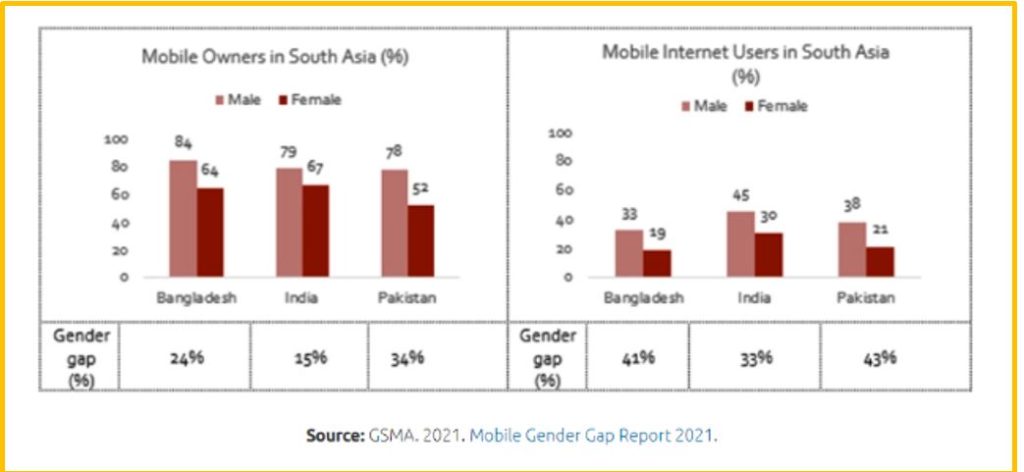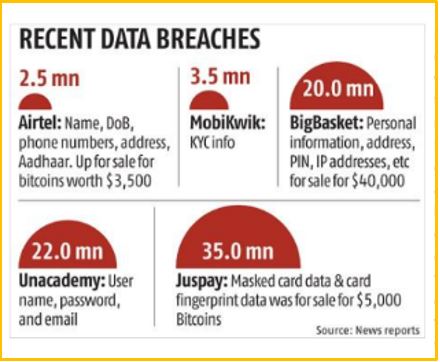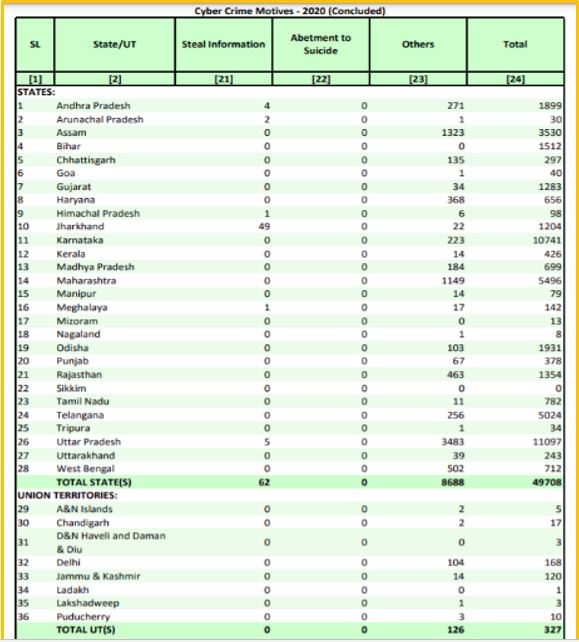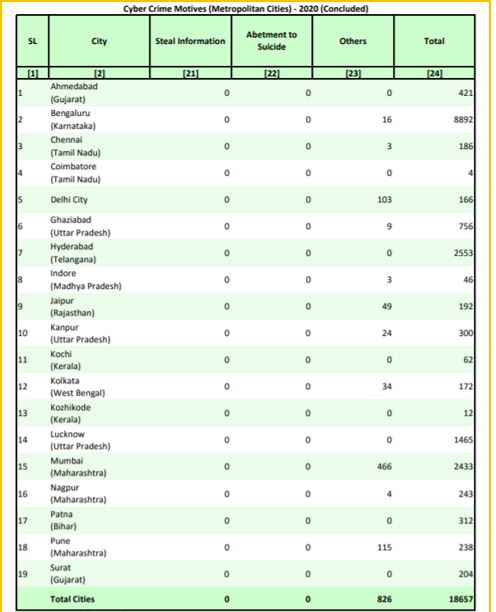PSYCHOLOGICAL IMPLICATIONS – LOCKDOWN AND AFTERWARDS Due to Covid-19, people saw an acute change in…
Sociological Impact of Covid-19 on Digital World
COVID-19 & DIGITALISATION IMPEDIMENTS
The technology is oft-mentioned as a boon and the Covid-19 has played a crucial role in making this boon a norm in Indian society. The immediate lockdown and restrictions imposed so as to curb the spread of the Wuhan virus forced people to take an urgent shift from offline to online mode of communication. However, the digital divide in India was pre-existing, even before the Covid-19 pandemic, which got further aggravated as the people residing in urban cities and having enough resources are able to easily afford the mobile phones and internet but the ones residing in poverty were unable to get access and even one who has access, unable to utilise it.

Pre-existing Digital Inequality
Prior to the Covid-19 scenario, as per the National Sample Survey (2017-18) merely 23.8 per cent of Indian households have access to the internet. Moreover, there was a huge rural-urban disparity when it comes to access to facilities like the internet or smartphone(s). The rural population in India is 68.84 per cent (~ 69%) as per the Census of India 2011. However, only 14.9 per cent (~ 15%) of the rural population have access to the internet as compared to 42 per cent in the urban areas.
Gender Gaps Vis-à-Vis Inequality
As per the Mobile Gender Gap Report 2021, in South Asia, Indian women are 15 per cent less likely to have a mobile phone than their male counterparts. They also utilise internet services 33 per cent less likely than men (as shown in Graphs 04 and 05). Although the mobile ownership gap reduced from 26 per cent to 19 per cent, and the mobile internet use gap from 67 per cent to 36 per cent, between 2017 to 2020 (as shown in Table 04), South Asia continues to have the widest mobile gender gaps globally.
Graphs 04 & 05 resp.
Table 04
Moreover, as a result of this digital divide among genders in India, the female to male vaccination ratio is worsened from 0.96 at the end-March 2021 to 0.90 at the end-June 2021 (Centre for Economic Data & Analysis, 2021).[i]
Online Education Concerns
The primary reason behind the digital gap in Online Education is the disparity in access to electricity, laptops, smartphones, network connections, et al. Though laptops are favourable to completing assignments and attending online classes efficiently, smartphones are preferred by more Indian as they cannot afford laptops. A study conducted by Pew Research Center in 2018 and reported in 2019 stated that merely 24 per cent of the Indians who responded owned a smartphone while 34 per cent in toto have any phone (as shown in Table 05).[ii]
Moreover, only 11 per cent of the population have access to any computer (i.e., laptop, desktop, palmtop, notebook et al.) (as shown in Table 06).
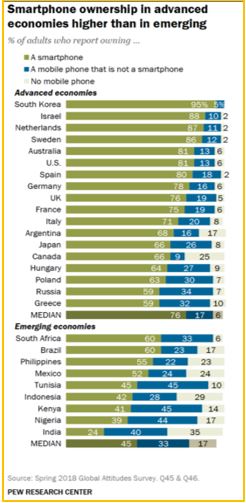
The parents, who were unable to afford the fees of the school and trying to manage the same, purchased smartphones during this lockdown. However, the issue got further aggravated with the burden of net data recharges.
In October 2020, a survey was conducted by the Annual Status of Education Report (ASER) of 118838 families,[i] which found out that 11 per cent of the families purchased new smartphones since lockdown began to facilitate their child.
Table 05
Table 06
Moreover, the experts stated that the divide is increased as even though these children possess smartphones when their data finishes, they fail to join the class and recharge it due to paucity of money.
DIGITALISATION IMPEDIMENTS: A PUSH TO CYBERCRIME
As per Kaspersky’s telemetry, the total number of brute force attacks against the Remote Desktop Protocol (RDP) jumped from 93.1 million worldwide in February 2020 to 277.4 million 2020 in March (i.e., during lockdown) — a 197 per cent increase. While the numbers in India went from 1.3 million in February 2020 to 3.3 million in March 2020. From April 2020 onward, monthly attacks never dipped below 300 million, and they reached a new high of 409 million attacks worldwide in November 2020. In July 2020, India recorded its highest number of attacks at 4.5 million.
In February 2021—nearly one year from the start of the pandemic—there were 377.5 million brute force attacks—a far cry from the 93.1 million witnessed at the beginning of 2020. India alone witnessed 9.04 million attacks in February 2021. The total number of attacks recorded in India during January and February 2021 was around 15 million (reported by Business Standard in April 2021).[i]
Figure 02
During the Covid-19 period, the data breaches also increased manifold. Figure 02 represents a few of them and the MobiKwik data breach is the most recent one.
As per the National Crime Records Bureau (NCRB) Crime in India – 2020 report, cybercrime in India increased 11.8 per cent from 44,735 registered cases in 2019 to 50,035 registered cases in 2020. The crime rate under this category increased from 3.3 in 2019 to 3.7 in 2020. During 2020, 60.2% of cyber-crime cases registered were for the motive of fraud (30,142 out of 50,035 cases) followed by sexual exploitation with 6.6% (3,293 cases) and Extortion with 4.9% (2,440 cases) (as shown in Table 07).
[Table 07]
Table 08
Moreover, the report mentioned cybercrimes in metropolitan cities, the number of registered cases increased by 0.89 per cent from 18,500 cases to 18,657 cases. The cybercrime rate also increased from 16.2 to 16.4 in 2020 from the previous year. Crime head-wise cases revealed that Computer Related Offences (Section 66 of IT Act) (11,356 cases) formed the highest number of Cyber Crimes accounting for 60.9% during 2020 (as shown in Table 08).
The report also mentions the motive or intent (reasons) behind the commission of cybercrime. As per the report, the majority number of the cases were of ‘Fraud’ amounting to a total of 60 per cent (i.e., 30,142 cases) cybercrime followed by Sexual Exploitation (3293 cases), Extortion (2440 cases), Disreputation (1706 cases), Personal Revenge (1470 cases) and so on committed in 2020 (as shown in Table 09).
Author: Kaustubh Kumar, in case of any queries please contact/write back to us via email to [email protected] or at Khurana & Khurana, Advocates and IP Attorney.
[i] Annual Status of Education Report (ASER)
[i] (Centre for Economic Data & Analysis, 2021).
[ii] Pew Research Center in 2018.

